Elk On The Move In The Grand Canyon Village
When Bob and I first arrived at Grand Canyon National Park, it was getting late in the day, dusk in fact, so we were eager to find our accommodations at Maswik Lodge and to have dinner. The Park is very large, and finding our way on the road system through Grand Canyon Village was taking some time. As we drove down one stretch of the pavement, adjacent to the railway track, Bob caught sight of a number of Elk making their way from one side of the roadway to the other.
We thought this quite remarkable, for Elk to be out amongst the people, and yet we figured it must be quite a common occurrence judging by the laid-back demeanour of the elk and the fact that other visitors were not scrambling to take photographs. Nevertheless, Bob and I took time out to snap a few pictures, albeit through the windshield of the car. The light was fading, and the elk were not given to standing in one spot.
The bull headed up the opposing side of the railway clearance, with a younger animal in tow. Bull lose their antlers in March, but the antlers begin to grow back in May as the bull elk ready for breeding season in late-summer. It was mid-June when we came across this bull elk, so its antlers had not attained full-size yet. They can reach a height of 4 feet (1.2 metres) above an elk’s head making an animal a full 9 feet (2.7 metres) tall.
In another area of the Park, on a different day, traffic was slightly impeded when a female elk, a cow, once again found the roadway to be a good means of getting around. The elk in Grand Canyon National Park are relative newcomers to that locale. Even as recently as 10 years ago, it would have been very rare to find an elk within the park’s boundaries.
Elk are not adapted to the arid climate of Arizona so even Merriam’s Elk, the indigenous species originally found in other regions of Arizona, were extremely rare inside the Park. Having been hunted to extinction by the 1890s, it became necessary to reintroduce them into Arizona, and starting in 1913, Rocky Mountain Elk were ferried from Yellowstone National Park to various regions of Arizona, which included a release about 50 miles south of Grand Canyon National Park, near the town of Williams.
Because they are always seeking a water source, they expanded their range into Grand Canyon National Park and nearby forests where numerous water sources can be found as well as vegetation that meets their food requirements. Lush, green lawns and water-filling stations within Grand Canyon Village have enticed the elk within range of visitors to the park. Add to that the fact that elk migrate to high mountain grazing grounds in early summer as that is where the cows will birth their calves, and you have the perfect habitat for elk all along the South Rim.
One afternoon, when Bob and I were in the vicinity of Canyon Village Market, we discovered a small herd grazing beneath the trees or laying in the shade. Although elk graze like cattle, they also browse like deer. Their diets vary according to the season with grasses being a year round staple that supplements other foods like bark, leaves, plants and tree sprouts. It is common for them to rest in a sheltered spot and ruminate between early morning and evening feedings.
Their summer coat is more reddish and darker than in winter, but the well defined buff-coloured rump patch is a constant. Elk are more than twice as heavy as mule deer and have smaller tails. We had already seen numerous Mule Deer while staying within the Park, and the differences were quite remarkable. I had a good look at the rump patches on this one because all of them kept their rear ends towards me as I tried to sneak some pictures.
Elk are also referred to as wapiti, a word that originates from the Shawnee and Cree word waapiti, which means “white rump”. Although they are members of the deer family, wapiti are much larger than most of their relatives and are recognized as the largest species of the deer family in the world, on top of being one of the largest land mammals in North America. Bob and I were fortunate to have seen this one bull. For the remainder of our stay at Maswik Lodge, over a week, we did not meet up with another single bull that carried a rack of antlers. This one, though, was mighty impressive.
Frame To Frame – Bob and Jean

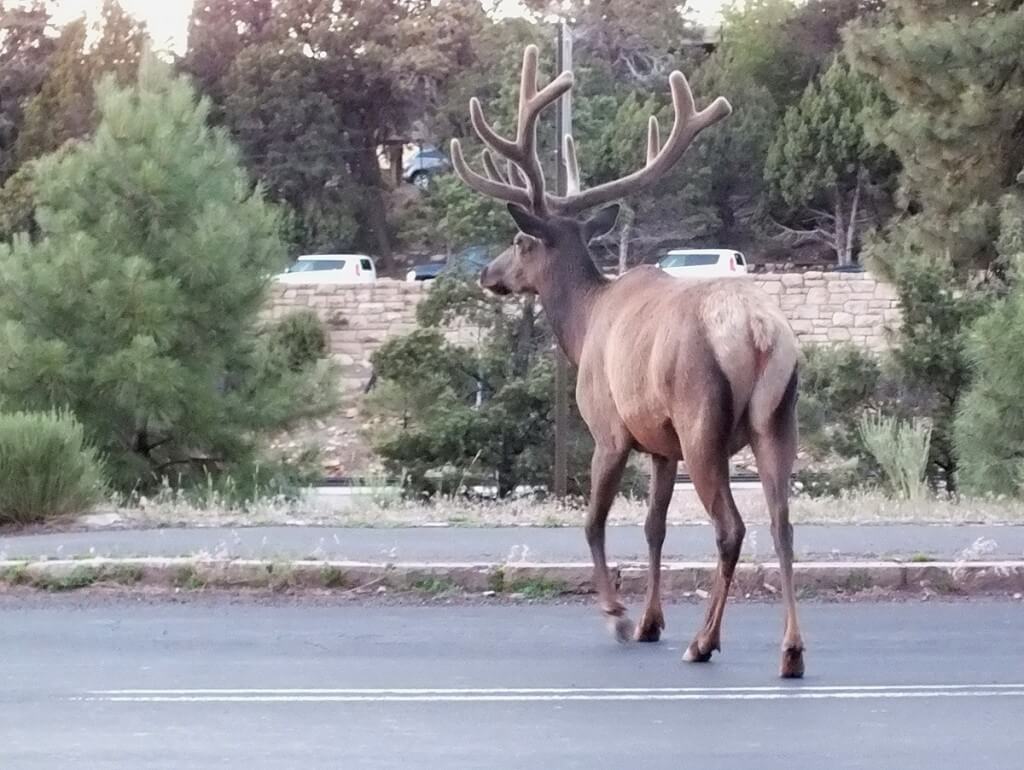
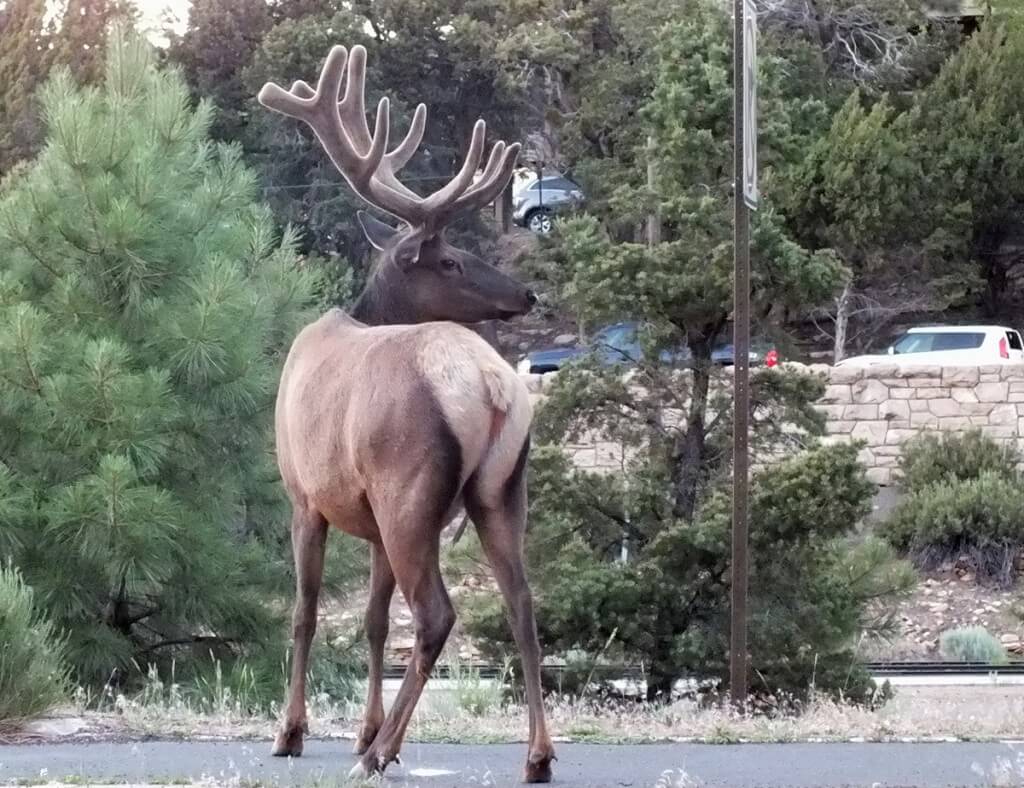

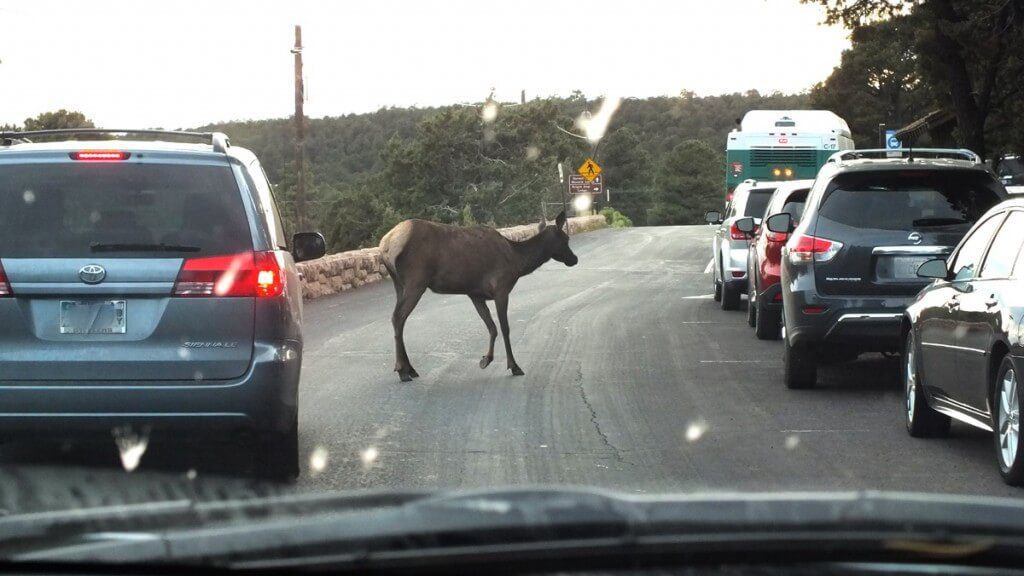
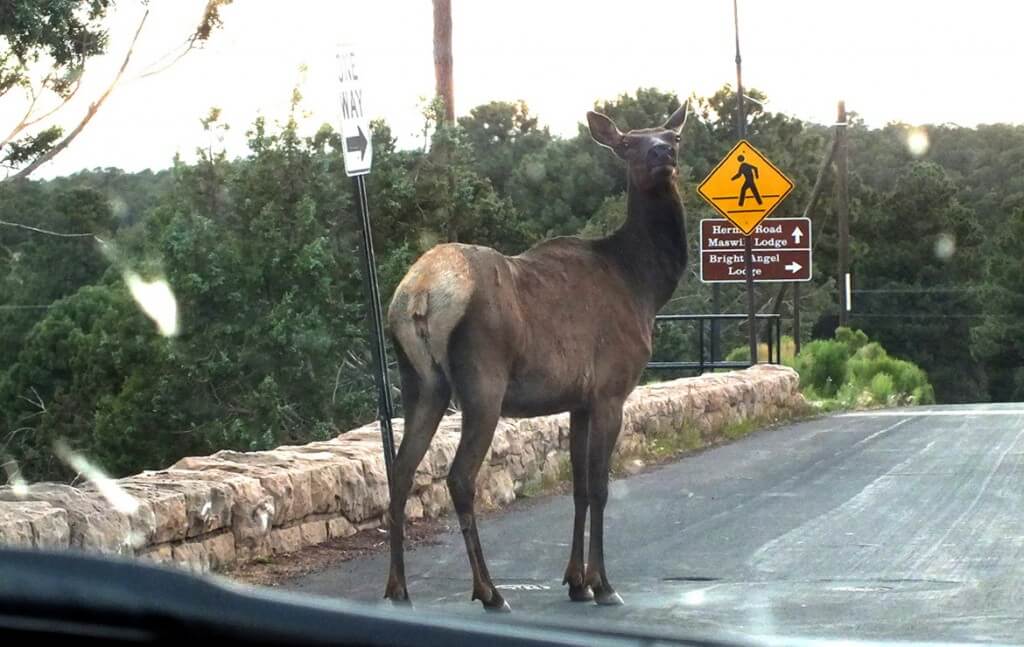
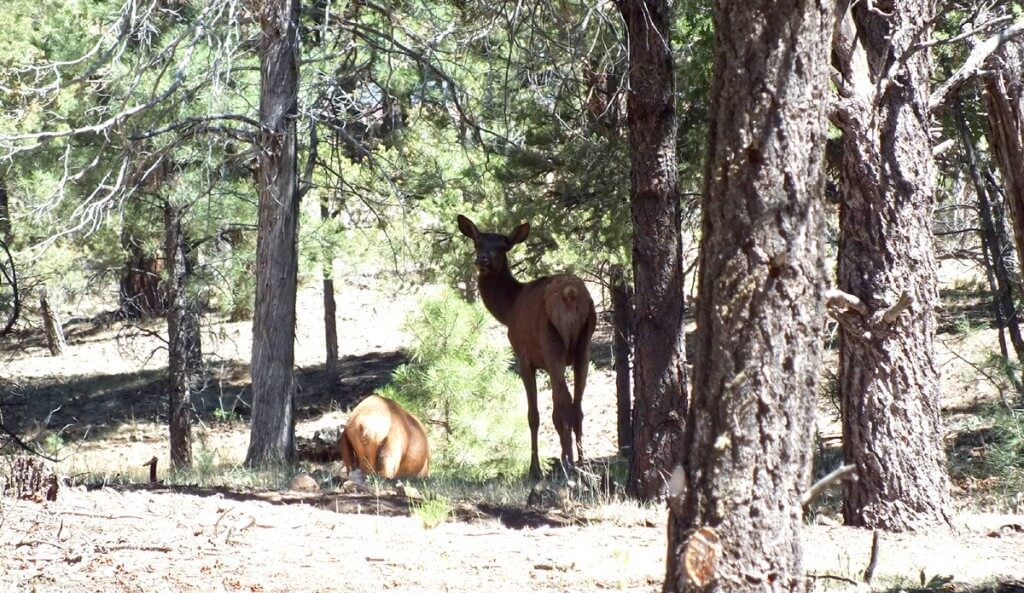
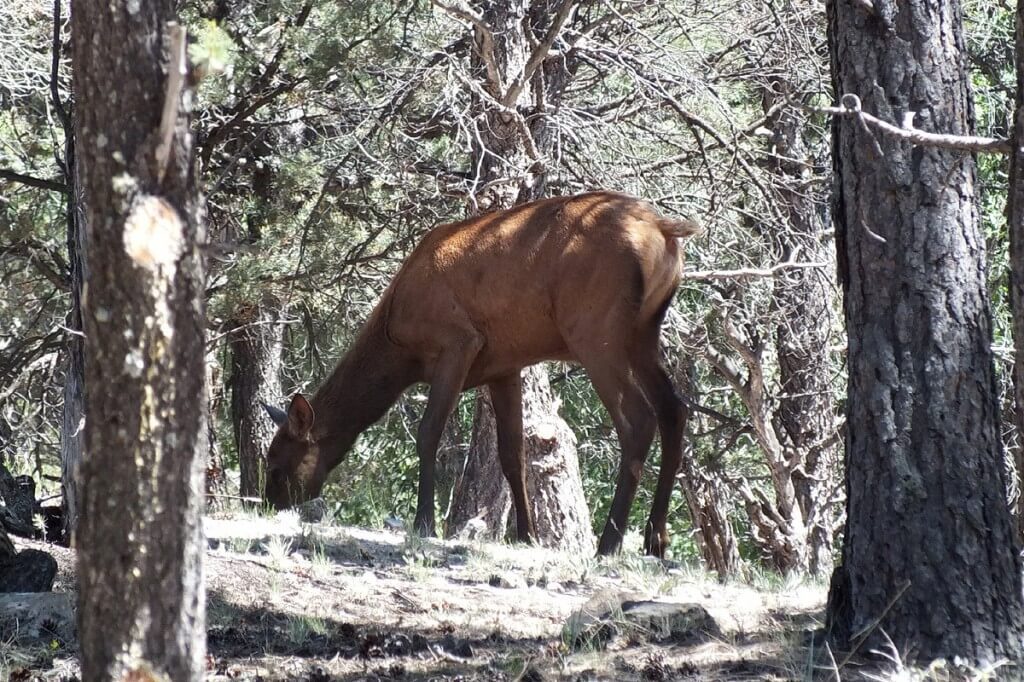
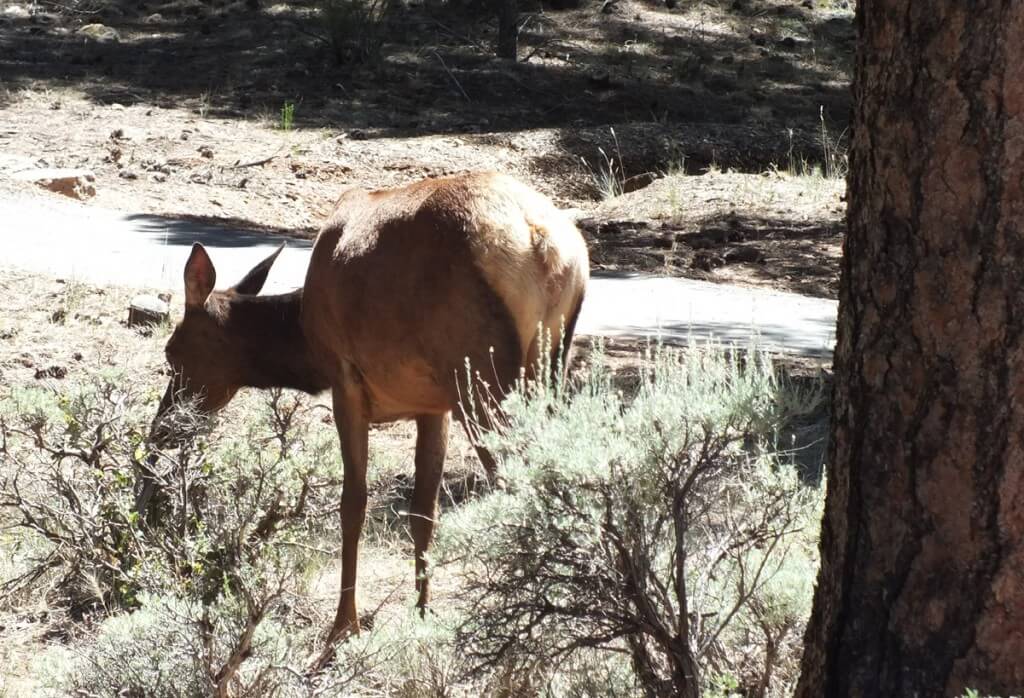
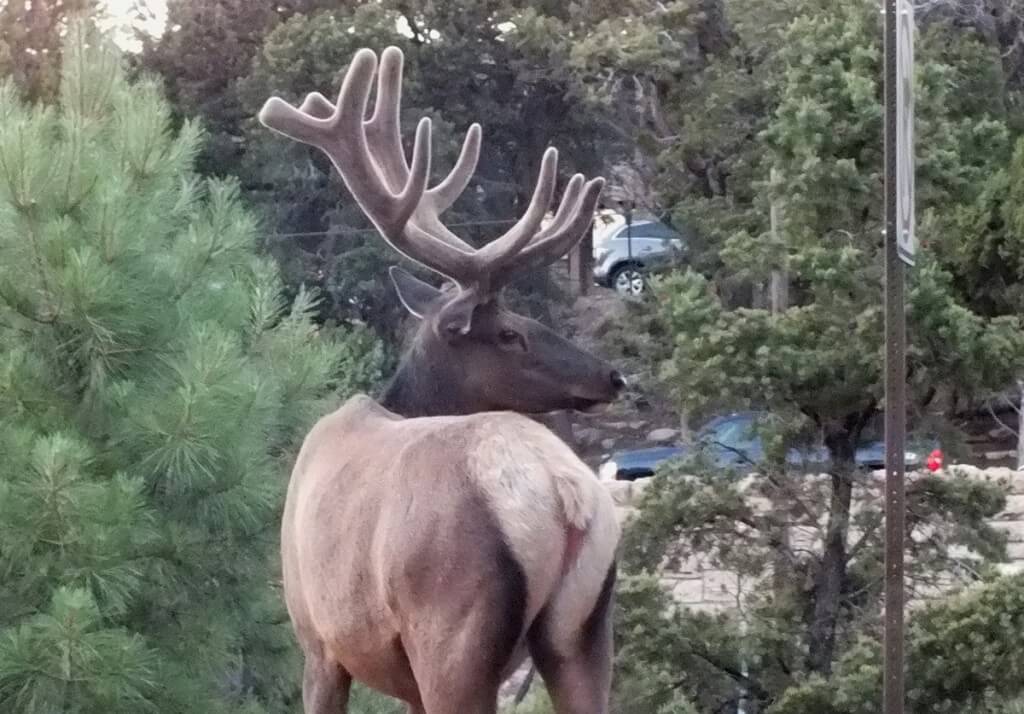
Amazing photos and a lovely story as always , Thanks for sharing your adventures.
thanks so much. It means a lot to hear that people appreciate our stories and photos. As we write up our blog posts, Bob and I enjoy reliving the experiences we have had.